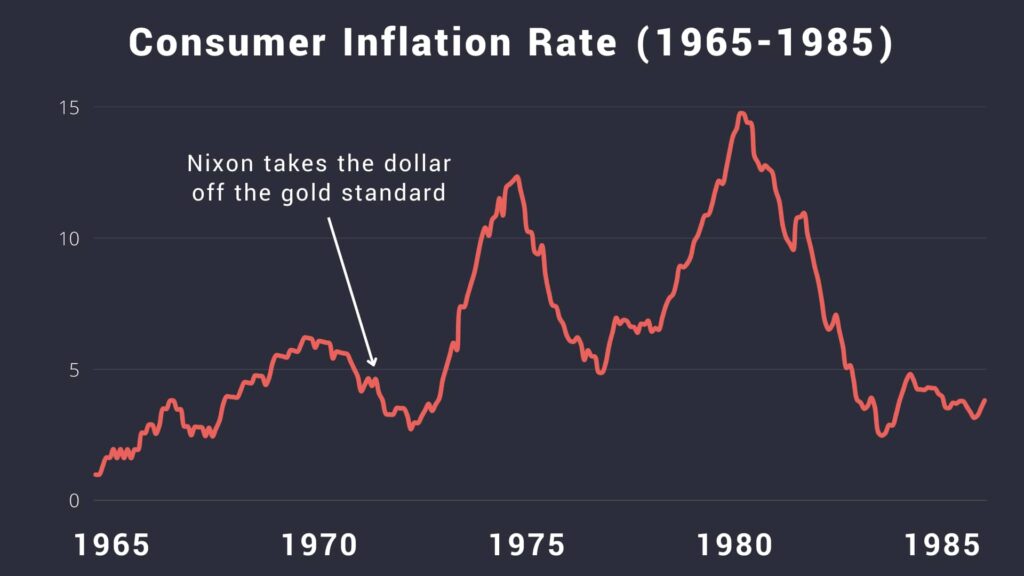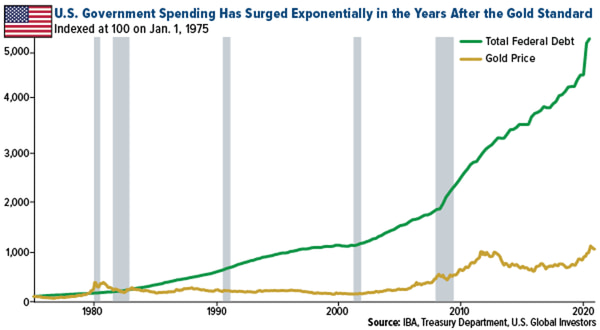Gold used to be the foundation of the global monetary system, and most countries upheld what became known as the gold standard. However, after World War I concluded, the gold standard gave place to fiat monetary standards in which currencies were not backed by any commodity. But what would happen if we returned to the gold standard today? Today’s article aims to find that out.
What is the gold standard?
Used by most of the world from the 1870s to the 1920s, the gold standard provided stability and fostered confidence in currency since gold is a finite resource and its supply is limited. However, it restricted monetary policy and tied inflation and deflation to the country’s ability to obtain gold.

Why was the gold standard abandoned?
Today, the only country that has returned to the gold standard is Zimbabwe. Its currency, Zimbabwe Gold (ZiG), is backed by gold and other precious metals. It was introduced on April 8, 2024. That said, many states and central banks hold certain amounts of gold as reserve assets.
Pros and cons of the gold standard
Returning to the gold standard would have several advantages and disadvantages when compared to today’s floating fiat currency standard. The most important ones are:

Pros
- Stable value: The current value of the U.S. dollar is derived from governmental decrees, and it can be printed without limits. Conversely, gold derives its value from scarcity, beauty, and other inherent qualities. As mining gold comes at a cost, it tends to be produced according to a self-regulating system: more currency requires more gold, the gold price rises to meet the new demand, then falls when the currency level is restored;
- Check on government spending: Central banks can print a fiat currency at will, issuing treasury bonds and essentially conjuring money out of nothing. Under the gold standard, any new money has to be backed by an adequate amount of gold, essentially capping the government’s excessive spending;
- Better long-term economic outlook: The unchecked printing of money tends to create bubbles, such as the real estate bubble that led to the Great Recession in 2007. The Federal Reserve’s response was to print more money to bail out failed financial institutions, solving the short-term issues but essentially paving the way for more financial crises in the long run. With the gold standard, this would not be possible;
- Reducing the trade deficit and cutting back military spending: The current fiat currency system allows the Federal Reserve to print money and fuel a limitless trade deficit. In fact, in 2022, the United States had by far the world’s largest trade deficit, meaning it buys more than it sells on the global market. Furthermore, the virtually endless supply of currency allowed the U.S. to spend $916 billion in 2023, which is 37.5% of the total defense budget of the entire world, which critics argue can lead to preemptive and unnecessary wars.

Cons
- Limited supply: The gold standard ties the supply of money to the production of gold. However, this can lead to issues when the economy grows faster than gold production, as new money can only be issued with more gold. In other words, the gold standard can cause deflation and economic contraction, as during the Great Depression. Furthermore, experts predict that by 2050, gold mining will become unsustainable as the global supply of gold runs out;
- Limited government ability to intervene during downturns: Without the checks of a backing commodity, the government can use monetary policy to influence the economy, e.g., lower interest during recessions or raise it during inflation. If we returned to the gold standard, the government’s hands would be tied, leading to a probable worsening of the issues, such as the potentially catastrophic economic depression during the COVID-19 pandemic;
- Gold supply shocks: Tying an economy to a commodity leaves it vulnerable to supply shocks, such as finding large new gold finds or being unable to secure new gold. For example, California’s gold rush in 1848 caused a crippling shock as large amounts of gold created inflation almost overnight. In fact, the gold rush led to a 30% rise in consumer goods prices from 1850 to 1855;
- Reduced public spending: If the U.S. returned to the gold standard, it would have to severely reduce public spending, including healthcare, education, defense, pensions, and social security, due to a check on public expenditure and the inability to print money. In fact, this was the sole reason countries drifted away from the gold standard, as they needed massive increases in military spending without having the gold to back the new currency.
What would happen if we returned to the gold standard?
If we returned to the gold standard today, our currency would be directly tied to the value of gold.
Proponents of the gold standard argue that prices would likely be more stable as the supply of gold is finite and relatively predictable. For better or worse, the central government’s power would be severely reduced, especially regarding monetary policy and public spending. The focus of the macroeconomy would shift from spending to producing.

However, critics argue that returning to the gold standard would put a hard cap on economic growth, as well as limit the government from preventing or softening the blow of economic downturns. Furthermore, they state that reintroducing the gold standard would not actually bring financial stability, as periods during which countries relied on it were not immune from depressions.
In other words, reintroducing the gold standard would be neither “better” nor “worse” than what we have today. The consequences are hard to predict as we will know what will happen only if we pull the switch.
Alternatively, if the gold standard survives in Zimbabwe, we could learn from its model. Time can only tell.
Disclaimer: The content on this site should not be considered investment advice. Investing is speculative. When investing, your capital is at risk.




